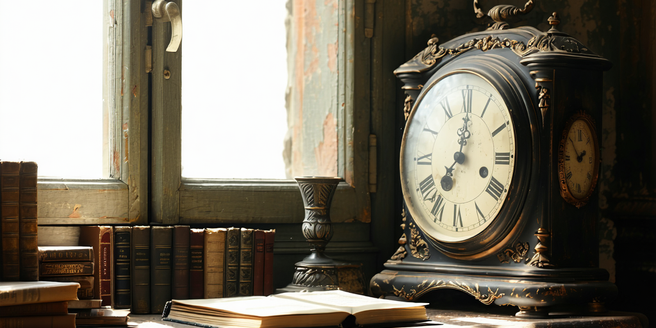
Understanding the Value of Family Heirlooms
Family heirlooms often carry with them a wealth of historical and emotional significance. Appreciating their value requires delving into not only their monetary worth but also their sentimental importance. Understanding the stories behind these treasures can enhance your family’s connection to its heritage, preserving traditions and values for generations to come. From handcrafted jewelry and vintage photographs to antique furniture, each object tells a part of your family’s story. Cherishing these items also honors the skilled artisans and ancestors who created or acquired them. Evaluating heirlooms can be an enlightening journey through the past, revealing insights into the cultural, social, and economic contexts of the time. Ultimately, understanding the value of family heirlooms helps ensure that these cherished items continue to be appreciated and protected by future generations.
Assessing the Condition and Authenticity
When it comes to family heirlooms, assessing their condition and authenticity is crucial for determining their true value. Begin with a thorough examination of each item’s physical state, taking note of any wear, damage, or repairs. Consulting with professionals such as appraisers or restoration experts can provide valuable insights and help in verifying authenticity. They have the expertise to discern historical details or rare elements that might not be immediately apparent. This due diligence is essential, as authenticity significantly affects the item’s historical and financial worth. Understanding the provenance, or the item’s ownership history, can also solidify its authenticity, potentially increasing its value. Keeping detailed records and photographs of each heirloom, along with any documentation such as certificates or previous appraisals, can aid in preserving its legacy for future enjoyment and use.
Proper Cleaning and Maintenance Techniques
Proper cleaning and maintenance of family heirlooms are essential to preserve their condition and extend their longevity. Different materials require specific care methods; for instance, wood, porcelain, textiles, and metals each have unique cleaning protocols. Start by researching the appropriate techniques for each type of item to avoid accidental damage. Use gentle, pH-balanced cleaning agents and soft cloths to mitigate wear. Conduct regular inspections to catch any signs of deterioration early. Storage and handling practices can also significantly impact the preservation of heirlooms. For example, keeping items away from direct sunlight, excessive humidity, and temperature fluctuations can prevent damage. If in doubt, consulting a conservation professional can provide additional peace of mind. Through vigilant care, these treasures can be maintained effectively, ensuring their aesthetic and historical value is preserved for future generations.
Storing Heirlooms Safely for Preservation
Safe storage of family heirlooms is crucial to their preservation, avoiding potential damage from environmental factors. Identifying an appropriate storage area with a stable climate is essential, as temperature and humidity fluctuations can cause deterioration. Ideally, store heirlooms in a cool, dry place away from direct sunlight. Using acid-free materials such as tissue paper or boxes can prevent chemical reactions that harm items over time. Additionally, position delicate pieces securely to prevent tipping or collapse. Ensure that textiles like clothing or quilts are stored flat to avert unnecessary creasing. Rotating items seasonally also aids in minimizing long-term strains. By investing in appropriate storage solutions and maintaining a consistent environment, heirlooms can be preserved to retain their integrity, making it possible for future generations to appreciate these precious artifacts as they were meant to be experienced.
Deciding Whether to Keep or Sell
Deciding whether to keep or sell family heirlooms can be a complex decision, intertwined with emotional, financial, and practical considerations. Start by evaluating the sentimental value the heirloom holds, as well as any family traditions it represents. Speak with family members to understand their views, ensuring that any decision is respectful of shared heritage and values. Consider the potential financial benefit if selling, especially if the item has significant market value or the funds are needed for family priorities. It’s also wise to reflect on practical aspects, such as available space, lifestyle compatibility, and maintenance responsibilities involved in keeping the item. Ultimately, the decision should balance honoring family legacy with current realities and future aspirations. Whether retaining for personal enjoyment or selling to invest in new beginnings, the choice should be made with thoughtful reflection and family input.
Passing Down Heirlooms to Future Generations
Passing down family heirlooms involves more than just transferring ownership; it’s about ensuring the continuity of family legacy. Begin by identifying which heirlooms hold particular significance and consider what they represent within the family tradition. Include future generations in conversations early, sharing the history and stories behind each item to cultivate appreciation and understanding. Be transparent about any special care or maintenance that will be required, especially for items that may need professional attention over time. Legal considerations, such as updating wills or creating a detailed inventory for estate planning, can prevent disputes. Providing written documentation of provenance or any historical context can enhance the heirloom’s personal and monetary value. By preparing thoroughly and engaging openly with descendants, families can ensure that heirlooms are cherished and preserved for the appreciation and enjoyment of generations to come.
